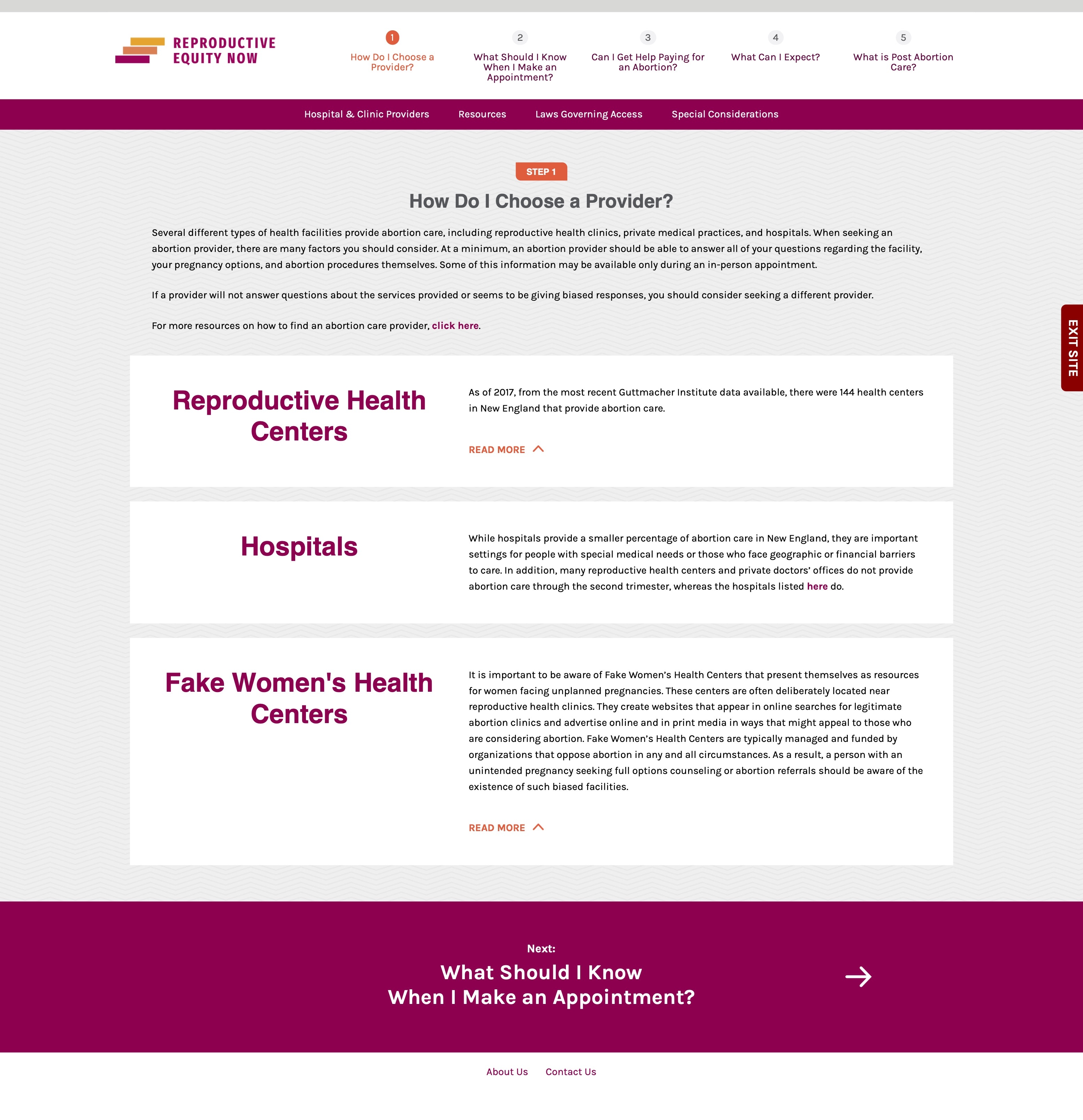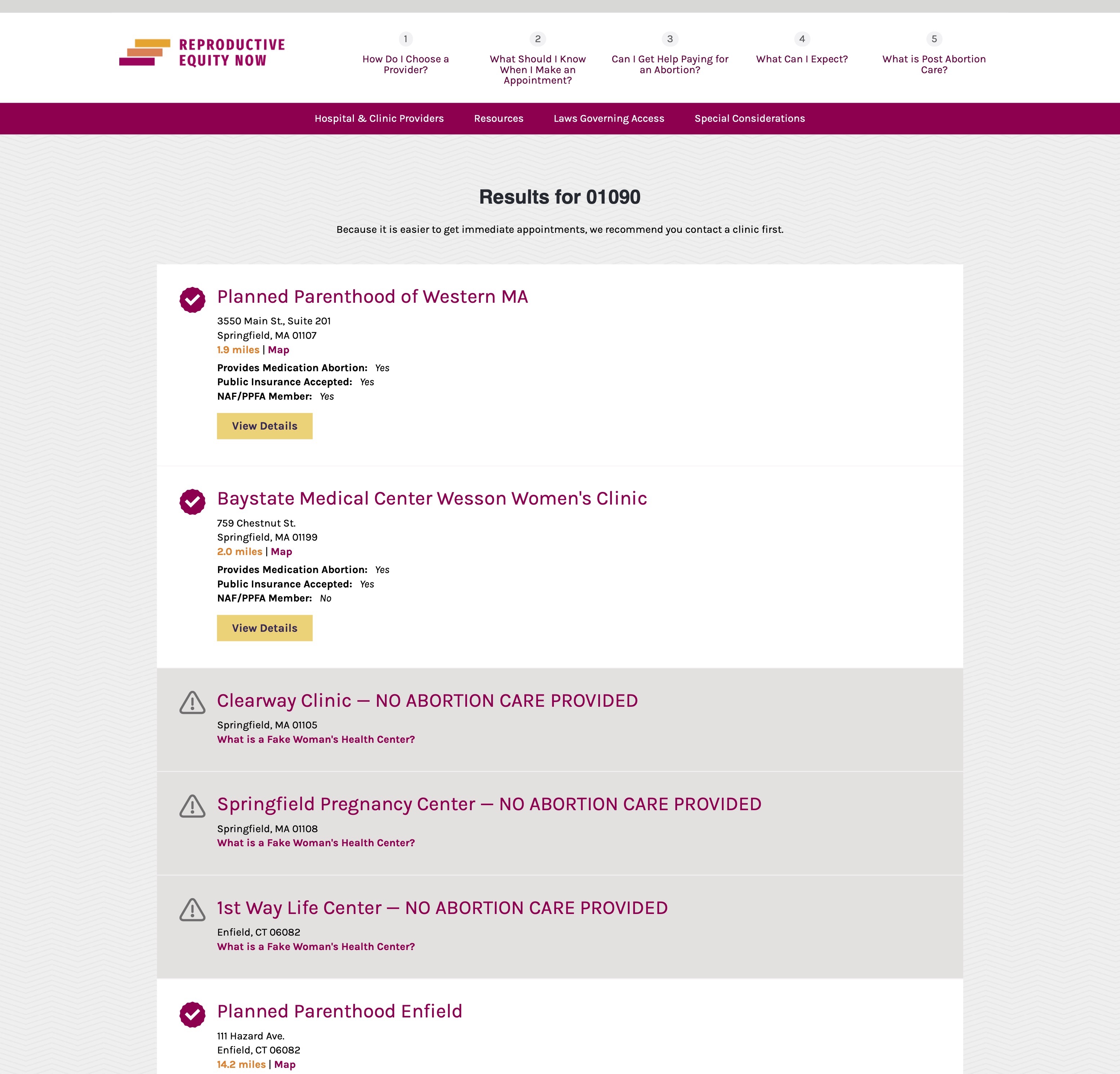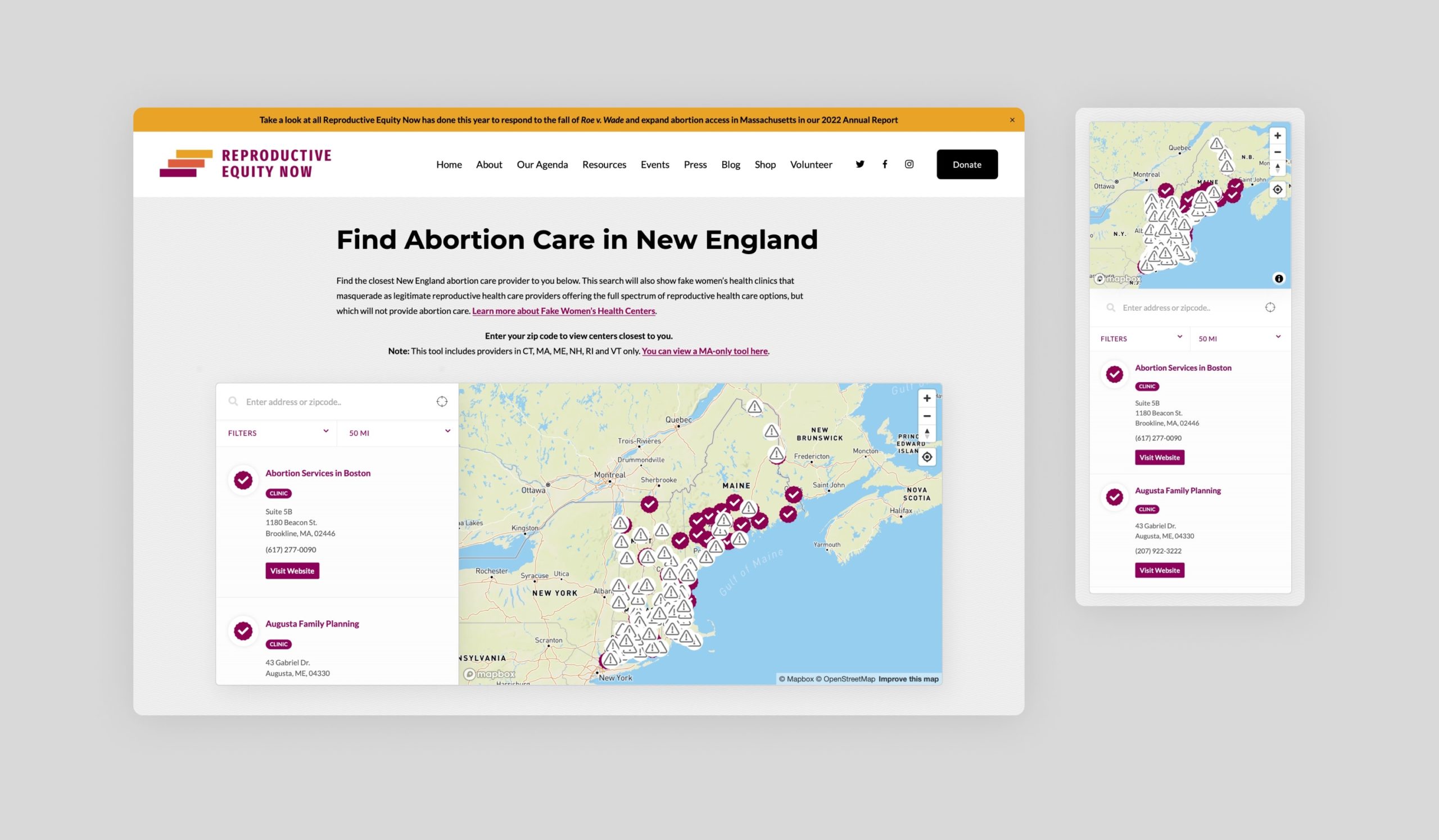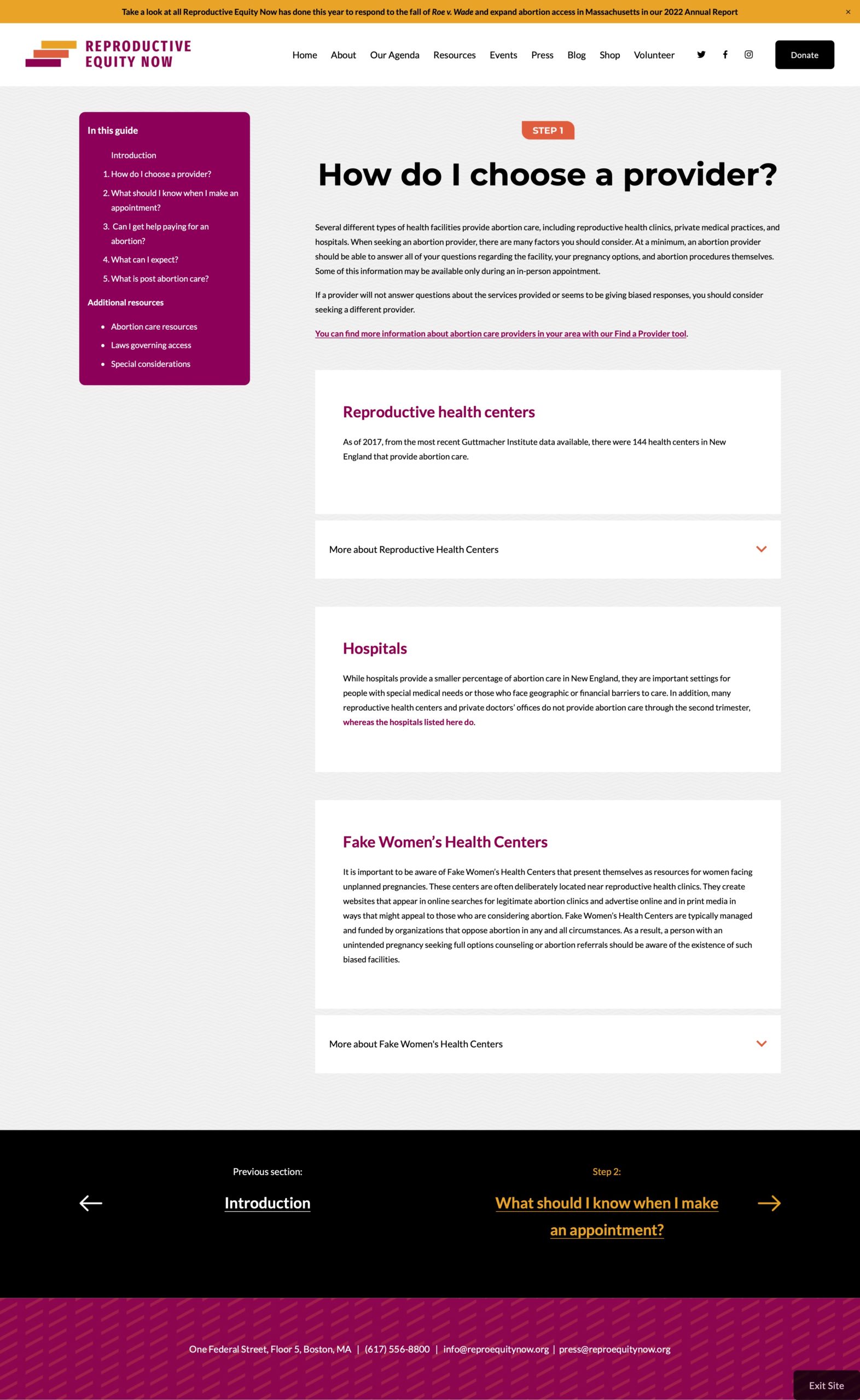Client — Reproductive Equity Network (REN)
Project — A pro-bono task we took on in the wake of Roe being overturned. Our goal was to migrate and improve products that had been previously hosted elsewhere into their existing SquareSpace. This would give them direct control over their content, which they previously had to pay a third party for.
Role — Project manager, strategy, design lead, coding (via SS and SaaS, w/ some custom CSS)
Why it was important — With the reversal of Roe, getting abortion access in some areas of the country immediately became perilous. The REN team wrote a guide to answer common questions people may have about abortion access. In addition to the guide, they created a tool that served 2 purposes: 1) to highlight abortion care clinics in New England and 2) shed light on a hidden issue some pregnant people may encounter: fake abortion clinics. Fake clinics do not offer abortion services, and often try to talk pregnant people out of abortions — yet present themselves as “abortion care”. These fake clinics far outnumber legitimate clinics in New England (and I’d reckon elsewhere in the U.S.) which can be confusing at best, predatory at worst.
Guide “Before”
The original guide was well-done, but came with a few caveats: 1) the client was unable to update it directly, so content would quickly become out of date or incorrect, and 2) the chain to get updates made was long and unreliable. Additionally, the client was paying for hosting and updates, since this lived on another site with another team in charge. We wanted to relieve them of that.

Guide “After”
I started by figuring out how to make what already existed work within their site. This meant rethinking the menu / nav system so there weren’t 3 bars of nav in the header. I aimed to keep the design close to the original, knowing there would be minor adjustments to account for the restrictions of SquareSpace. While I was in there, I implemented some quality of life improvements, namely: a condensed, more accessible menu, the ability to paginate forward or backward at the end of a page, and better content organization. You can check out the guide here.
Look up tool “Before”
The look-up tool was built with a single entry point — zip code search. Entering a zip would load all results in order of distance from said zip. While it accomplished what it needed, it didn’t offer much more in the way of functionality, and the client was unable to make updates directly.

Look-up tool “After”
The goal for the new tool was to find a SaaS “out of the box” solution that the client would be able to adjust themselves. After test driving a handful of “address look-up” tools, I settled on a Store Rocket, which was the best combo of price and feature set. Also has a very clean, intuitive in-browser experience, which made it easy for me to get the client up to speed.

A word of advice: when it comes to addressing sensitive topics like abortion with pre-built tools, READ THE TERMS OF SERVICE (TOS) CAREFULLY. The way some conditions were worded moved us to adjust our approach on how certain locations were presented within the tool. And with a topic as charged as this, we didn’t want to leave any room for someone to try to shut it down. So make sure to cover your bases, even if it means reading a bunch of TOSes.

